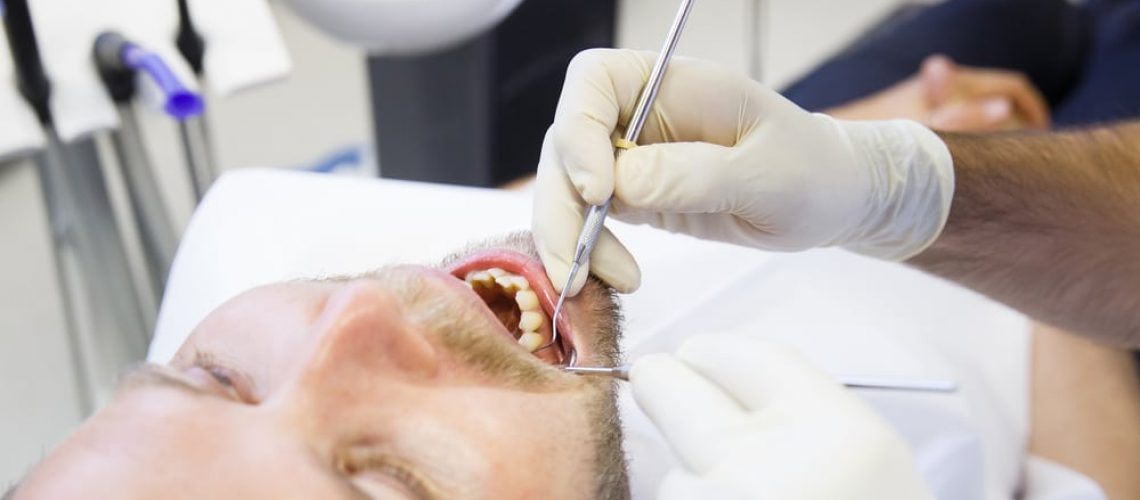Root canal treatment is also known as ENDO or RCT therapy. The process works to disinfect the nerve canal inside the tooth. You will know you need this treatment because you will most often experience severe pain.
You may also notice:
- Swollen gum around the affected tooth
- A swollen face
- A pimple-like perturbance on the gum
- Sensitivity to hot and cold food and drink
- Sensitivity or pressure when biting
What Causes Root Canal Infections?
A number of factors can precipitate an infection, including:
- Injury or trauma
- Gum disease
- A lost or broken filling or crown
- A cavity that has reached the root
- Extensive wear
- Deep untreated decay in a tooth
How Does a Root Canal Procedure Work?
The first step in a root canal procedure is a dental x-ray. A powerful machine, like a Cone Beam CT-Scan, will be able to identify any infections and determine which teeth need treatments. An RCT generally requires two to three appointments (depending on the number of canals). Each session will last 1 – 1.5 hours.
Fine cleaning instruments called files will be used to shape and clean the canals. These files remove infected pulp and bacteria. Once the pulp has been removed, the canal will be filled with anti-bacterial and anti-inflammatory medicines to stop any further infection or swelling. This process is repeated at every visit. Further x-rays will be used to check the infection has been removed and also check on the length of your canals.
The canal of your tooth will also be packed with a natural tree-sap solution called gutta-percha in your final visit. This protects the inside of the tooth from infection. A temporary filling will also be used to protect the tooth. After a few weeks, a filling, crown or even an inlay will be used to complete the treatment.
Special Treatment Used by Holistic Dentists to Kill 10,000 More Bacteria
An Holistic Dentist will use either Laser therapy or Ozone therapy to kill 10,000 more bacteria in the canals of your infected tooth. Holistic dentists believe this is a major difference in the removal of bacteria from a root canal system, but are still unsure if this is enough for root canals to be safe for all patients.
Is A Root Canal Necessary?
Absolutely. If you have an infection, it needs to be addressed, or you will continue to suffer pain, swelling and even a fever. Eventually, you won’t be able to eat and drink normally, and the infection can spread, create abscesses and also lead to bone loss around the jaw. The infection or poison from the infection can spread to other parts of the body.
Post-Op Root Canal Therapy Tips
- Your lips, teeth and tongue will be numb after each appointment. You need to avoid chewing until the numbness has completely worn off. This is essential because chewing with a numb mouth can open you up to injury and burns due to a lack of sensitivity to whatever you’re chewing on.
- It is possible for the temporary filling to wear away or break off in between appointments. If this happens, you should visit your dentist. It can be easily replaced, and it’s best this is done as soon as possible, so bacterial in the saliva do not re-infect the tooth.
- You can take pain medication to remove any discomfort following the procedure. It’s normal for it to take several days for the pain and discomfort to subside. As there is antibiotic and pain killer sealed in the tooth, most often you do not need systemic antibiotics.
- If you have been given antibiotics, you need to take them until you have finished the prescribed amount. Don’t stop just because symptoms have stopped. This can lead to increased infection rates.
- To keep the temporary filling in place, avoid sticky and hard foods. If you need to indulge in these foods, chew in the other side of your mouth.
- Good oral hygiene is essential following a RTC procedure. You need to brush and floss daily. Many root canals are caused by poor oral hygiene, so requiring one RCT is a reminder of just how vital your toothbrush and flossing are to protecting your teeth and gums.
- When brushing and flossing, you need to be careful of the temporary filling. Gently brush the area and when flossing remove the floss from the side rather than the top to ensure you don’t accidentally dislodge it. You should also avoid touching or applying and pressure to the area. You’ll be tempted to use pressure to deal with any sensitivity, but this will only create further complications. As always, it’s best to leave it alone and let your body heal.
- If you want the best protection, ask your dentist to place a crown on the tooth. This is more expensive than a filling, but it is more effective at preserving the structure of the tooth. Teeth that have undergone root canal treatment are brittle and more susceptible to fracture and infection. So, by electing to having a crown treatment, you can reduce the risk of the tooth fracturing. This can save you from ever going through this procedure again.
If you would like more information or to book an appointment, please contact us.


